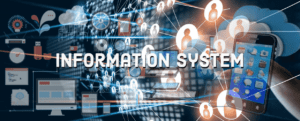The advent of self-driving cars marks a transformative chapter in the automotive industry, promising to reshape transportation as we know it. This article explores the evolution, technological underpinnings, and implications of self-driving cars on the future of mobility.
Self-Driving Cars Facts
Understanding the foundational facts surrounding self-driving cars is essential for recognizing their scope and potential:
- Levels of Automation: Self-driving cars operate on a spectrum of automation levels, categorized from Level 0 (no automation) to Level 5 (full automation). Artificial intelligence (AI), sensors, and connectivity advancements enable vehicles to assume more control over driving tasks progressively.
- Sensing and Perception: Self-driving cars rely on many sensors, including lidar, radar, cameras, and ultrasonic sensors, to perceive their surroundings. These sensors feed real-time data to onboard computers, allowing the vehicle to make informed decisions in dynamic environments.
- Machine Learning and Decision-Making: Machine learning algorithms play a crucial role in the decision-making procedures of self-driving cars. By analyzing vast datasets, these algorithms enable vehicles to learn from diverse driving scenarios and make adaptive decisions, improving safety and efficiency.
- Regulatory Frameworks: Integrating self-driving cars into public roadways involves complex regulatory considerations. Governments and regulatory bodies worldwide are establishing safety standards, testing protocols, and legal frameworks to ensure the responsible deployment of autonomous vehicles.
Self-Driving Cars Views
Examining various perspectives on self-driving cars provides insight into the challenges and potential solutions:
- Safety and Trust: Proponents emphasize the potential of self-driving cars to enhance road safety by reducing human errors, which account for most accidents. Building public trust in autonomous technology requires rigorous testing, transparency, and clear communication about safety measures.
- Urban Planning and Traffic Efficiency: Advocates highlight the potential for self-driving cars to revolutionize urban planning and traffic management. Efficient traffic flow, reduced congestion, and optimized transportation systems could reshape cities and improve overall mobility.
- Ethical and Legal Dilemmas: Critics raise concerns about self-driving cars’ ethical and legal dilemmas. Questions about liability in the event of accidents, ethical decision-making algorithms, and the potential displacement of jobs in the transportation sector demand careful consideration.
- Environmental Impact: The widespread adoption of self-driving cars has the potential to impact the environment positively. Efficient route planning reduces fuel consumption through optimal driving patterns, and the potential for electric and shared autonomous vehicles contributes to sustainability goals.
Conclusion
Self-driving cars represent a paradigm shift in transportation, poised to revolutionize how we move and interact with urban spaces. Addressing safety concerns, regulatory challenges, and societal impacts is crucial as the technology continues to evolve. The journey towards fully autonomous mobility requires collaboration between industry stakeholders, policymakers, and the public to ensure a future where self-driving cars contribute to safer, more efficient, and sustainable transportation systems.












